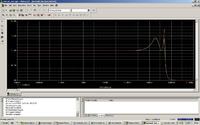oshaye3
Member level 3
Dear all,
I want to know the reason that makes the Chebyshev has fastest rate of phase change than that of Butterworth. And also the longest group delay.
Please any comments.
I want to know the reason that makes the Chebyshev has fastest rate of phase change than that of Butterworth. And also the longest group delay.
Please any comments.

